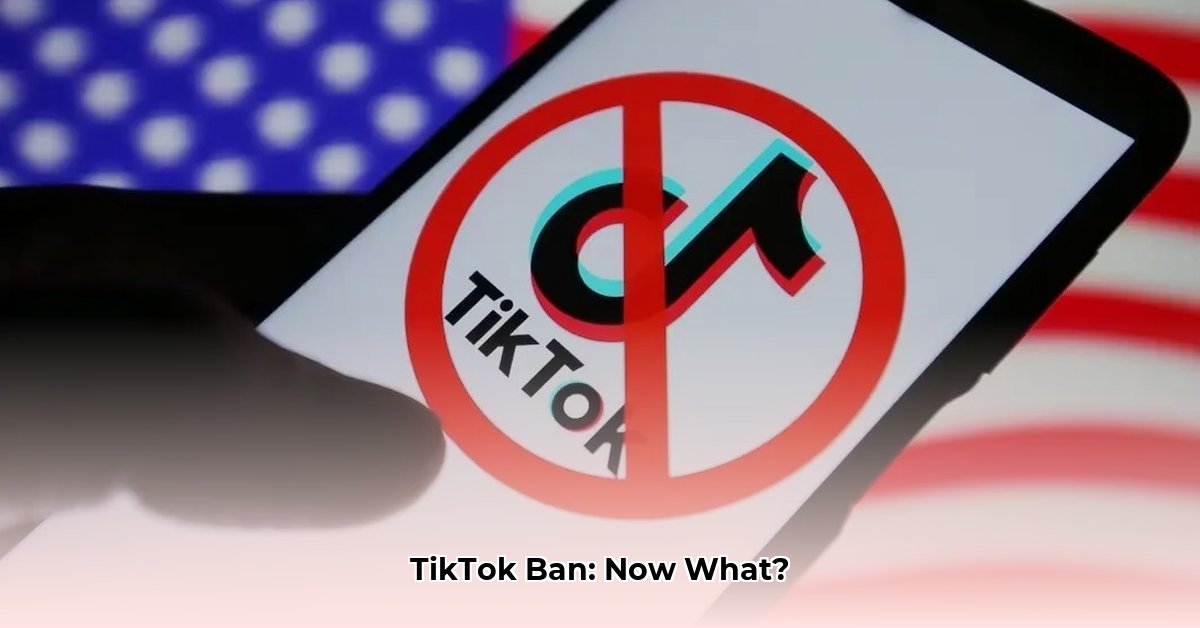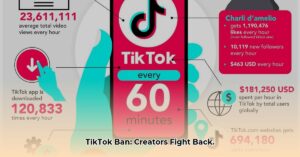Executive Summary: Charting a Course Through Uncertainty
The potential TikTok ban in the U.S. presents significant challenges and opportunities for advertisers. This evolving situation demands a proactive and adaptable approach. This guide provides up-to-date information, actionable strategies, and expert insights to help advertisers navigate the changing social media landscape. From mitigating financial impact to exploring alternative platforms, this resource hub is designed to empower advertisers to not only survive but thrive in a post-TikTok world.
Decoding the Domino Effect: Consequences of a Potential TikTok Ban
A TikTok ban could trigger a chain reaction across the digital advertising ecosystem. Understanding these potential consequences is crucial for informed decision-making.
Revenue and Reach: Quantifying the Potential Losses
A ban could disrupt revenue streams, particularly for businesses reliant on TikTok Shop and organic reach. Estimating the potential financial impact is critical. Consider the percentage of your advertising budget allocated to TikTok and project the potential decline in reach based on your target demographic. Visualizing this data with charts or graphs can illuminate the challenges and potential opportunities. For some businesses heavily invested in TikTok marketing, the impact could be considerable, similar to a retailer suddenly losing a prime storefront.
Audience Migration: Tracking the Digital Diaspora
TikTok’s predominantly younger user base will likely disperse across other platforms like Instagram Reels, YouTube Shorts, and emerging alternatives. Understanding these migration patterns is key to re-engaging your target audience. This requires a nuanced understanding of each platform’s demographics and user behavior.
Budget Reallocation: Strategic Reinvestment
With TikTok out of the picture, ad budgets require strategic reallocation. Simply transferring funds isn’t enough; each platform has its unique characteristics and costs. Analyzing platform demographics, ad formats, and cost-per-click is crucial for optimizing your return on investment.
The Influencer Equation: Adapting Partnerships
The ban disrupts established influencer marketing ecosystems. Brands must assess whether their current influencer partnerships can effectively transition to other platforms, considering follower migration and platform-specific engagement strategies.
Exploring the Alternatives: A Comparative Analysis
Choosing the right alternative platform requires careful consideration of various factors.
| Platform | Pros | Cons | Cost | Demographics |
|---|---|---|---|---|
| Instagram Reels | Familiar interface, established user base, strong visual focus, shoppable features | Potentially higher ad costs, algorithm can be unpredictable, might not fully replicate TikTok’s organic reach | Moderate-High | Similar to TikTok, but with a slightly broader reach |
| YouTube Shorts | Massive audience, integration with YouTube ecosystem, longer video options, monetization opportunities | Different content style, may require higher production value | Moderate | Wider range, skews slightly older |
| Lemon8 | Emerging platform with a focus on lifestyle and aesthetics, potential for e-commerce integration | Smaller audience compared to established platforms, requires experimentation | Moderate | Similar to TikTok, focus on Gen Z and Millennials |
| Triller | Focus on music and AI-powered features, attracts a music-oriented audience | Smaller audience than major platforms, niche appeal may not suit all brands | Moderate | Music lovers, Gen Z, creators |
| Others | Niche platforms offer unique opportunities for targeted advertising | Untested markets, smaller audiences, platform stability might be a concern | Varies | Highly platform-dependent |
Mitigation Strategies: Building Resilience in a Changing Landscape
-
Diversification: Distribute your advertising budget across multiple platforms to mitigate risk and maximize reach. This strategy provides a safety net in case of unforeseen platform disruptions.
-
Audience Analysis: Deeply understand your target demographic’s online behavior and platform preferences. This allows you to effectively target your audience on the platforms they frequent.
-
Content Adaptation: Tailor your content to fit each platform’s specific format and audience expectations. Repurposing content strategically can save time and resources while maximizing engagement.
-
Budget Flexibility: Be prepared to adjust your ad spending based on platform performance and evolving market dynamics. This allows you to optimize your return on investment in a fluctuating market.
Legal and Regulatory Updates: Staying Informed
Stay abreast of the latest legal developments and regulatory changes regarding TikTok and other social media platforms. This knowledge is crucial for ensuring compliance and adapting to the evolving legal landscape. Consult with legal professionals for guidance on specific legal questions.
FAQ: Addressing Key Concerns
(This section will be populated with frequently asked questions from advertisers as the situation evolves.)
Expert Insights: Perspectives from the Field
(This section will feature quotes and analysis from marketing professionals, legal experts, and industry leaders.)
Resource List: Essential Links and Tools
- TikTok Newsroom: Stay updated on official statements from TikTok.
- Social Media Today: Follow industry news and analysis related to social media marketing.
The Future of Social Media Marketing: Embracing Change
The evolving social media landscape demands constant adaptation. While experts offer various perspectives on the future of short-form video, influencer marketing, and the dominance of established platforms, one thing remains certain: diversification and adaptability are essential for long-term success. Ongoing research will shed further light on these evolving trends, making constant learning crucial for staying ahead of the curve.







